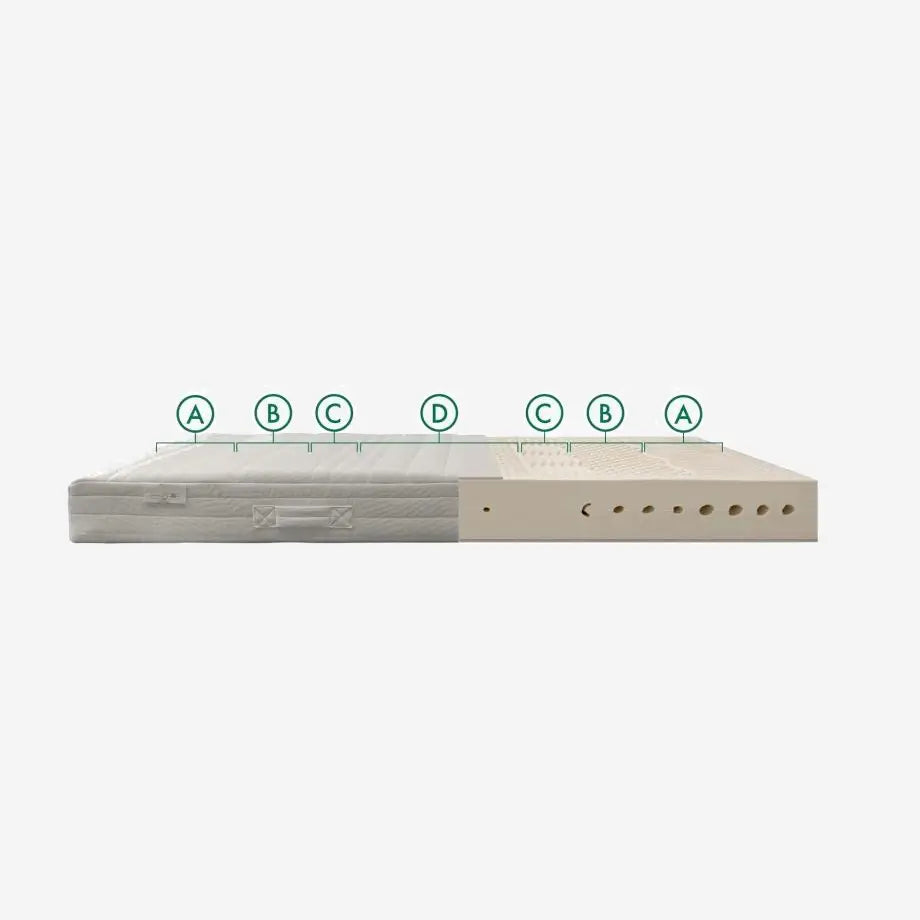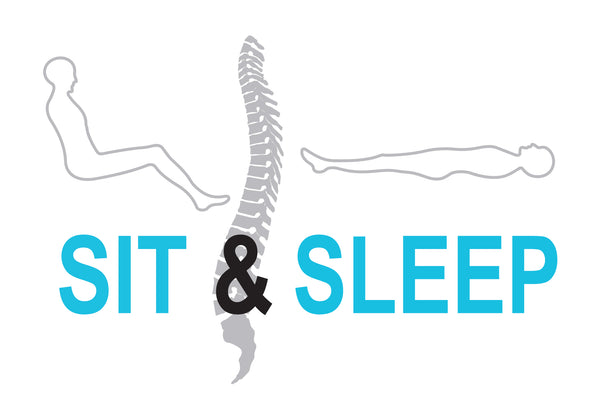
How many zones should a mattress consist of?
What is a zone in a mattress and how does it work?
A zone in a mattress refers to a specific part of the mattress that offers a certain firmness or level of support. Zoned mattresses are designed to properly support different parts of your body, which helps provide better spinal support and a comfortable night's sleep.
Because your body isn't made of a single, straight line, it doesn't have the same support needs everywhere: your shoulders may sink deeply into the mattress and your pelvis needs to be supported, while your lower back needs more support. A zoned mattress takes this into account.
Examples of zones:
- 3-zones: simple distribution, usually softer at the shoulders and harder at the hips.
- 5 zones: extra focus on lower back and knees.
- 7-zone: most common advanced variant, with separate zones for head, shoulders, lower back, hips, knees, lower legs and feet.
Why are zones in a mattress important?
A good mattress has different zones. These zones are also called comfort zones, but "support zones" is actually better. The mattress provides customized support for the part of the body lying on it. So, extra support for the hips and waist, and softer support for the bust and shoulders.
This ensures that
- Better ergonomics: your spine stays straight.
- Fewer pressure points: less chance of pain or numb limbs.
- More comfort: especially if you sleep on your side.
In addition, the zones should contribute to low pressure on skin and muscle tissue. Too much pressure can cause morning stiffness or numb arms. Therefore, choose the firmness of your mattress based on your body weight. A mattress should also ensure a neutral spinal position , creating even pressure on the intervertebral discs. Your head and pelvis should be aligned.
Most commonly used methods to create zones in a mattress
Pocket spring mattresses create zones by using different wire thicknesses or spring strengths: softer springs at the shoulders, firmer ones at the lower back. Furthermore, the number of coils per spring determines whether it is firmer or softer. More coils mean softer, fewer coils mean firmer. Finally, the spring shape/height influences the flexibility of the zone.
In foam and latex mattresses, zones are created by cutting or profiling. Grooves, perforations, or wave structures are applied for variable support. The density of the foam or latex also plays a role. For example, it is softer for lighter shoulders and firmer for a heavier pelvis.
Our vision
Every body is built differently and therefore each person has different needs to achieve the perfect sleeping position.
Optimal recovery at night is only possible when your spine is in a neutral position. That's why there's no one-size-fits-all bed. A flat bed often doesn't provide enough support for your lower back and not enough space for your shoulders.
Depending on your body profile, you have specific needs regarding comfort zones, both in your bed base and mattress, combined with the right pillow. Your body weight also plays a significant role. Along with your body shape and height, this largely determines which comfort level suits you best. If you are light and slender, you generally need a soft or supple mattress. If you have a broader and heavier build, you're better off choosing a firmer sleeping comfort.
If the support zones need to change regularly, for example during pregnancy or weight loss, you can choose an adjustable mattress made of pocket springs or latex.


